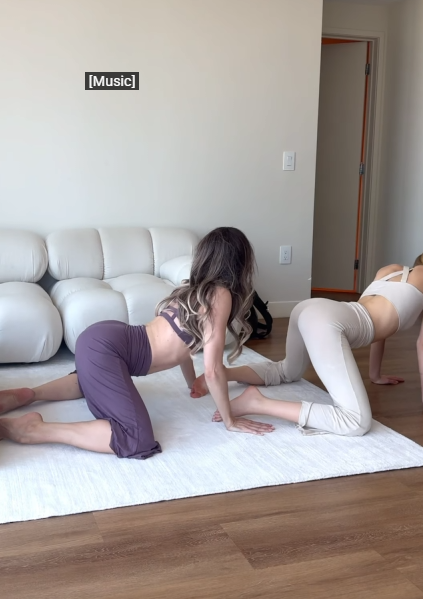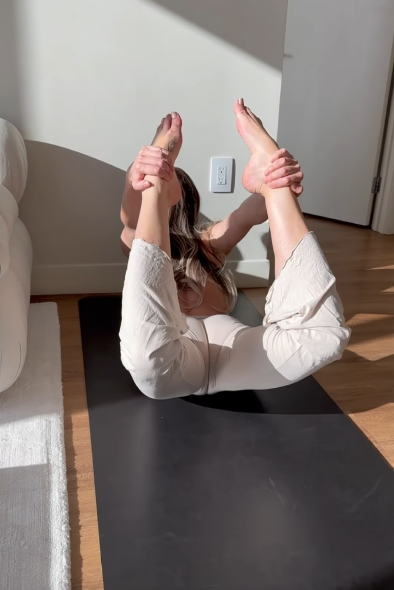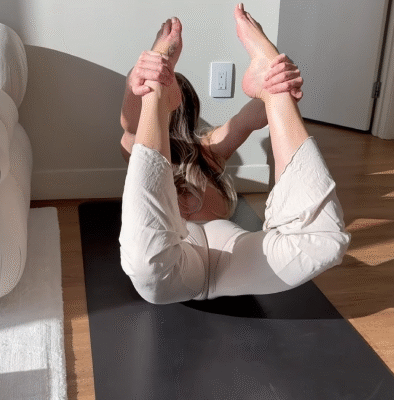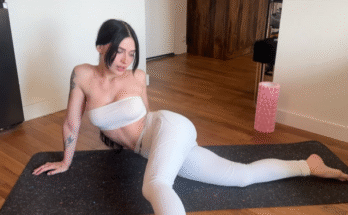
Hip opening yoga has become one of the most popular practices in modern yoga sessions, and for good reason. Our hips are the crossroads of our body. They carry us when we walk, they help us sit, stand, bend, and twist, and they store a surprising amount of tension. Many people don’t realize that emotional stress and daily habits like sitting at a desk, driving long hours, or even standing in one position for too long can create tightness in the hip area. When left unchecked, this stiffness can affect posture, back health, flexibility, and even mood. That’s why “Hip Opening Yoga with flow and mindful movement” is such a powerful way to restore balance to body and mind.
Why Hip Opening Matters
The hips are home to some of the largest muscle groups in the body, including the glutes, hip flexors, and adductors. These muscles work in harmony with the lower back and pelvis to stabilize movement. When the hips become tight, they restrict mobility and put extra strain on the spine, knees, and even shoulders. A lack of hip mobility can make simple daily actions—like bending to tie your shoes or climbing stairs—more challenging.
On a deeper level, many yoga traditions consider the hips to be an energetic storage center for emotions, especially those tied to stress, fear, or unresolved experiences. That’s why students often describe hip-opening yoga as both physically liberating and emotionally cathartic. Practicing hip-opening sequences can help you release not just muscular tension, but also mental weight you didn’t realize you were carrying.

The Role of Mindful Flow
When practicing hip-opening yoga, it’s important not to rush. The hips are complex joints, and the surrounding muscles can take time to unwind. Mindful flow brings together breath and movement so that the body softens naturally, without force. By syncing each inhale and exhale to your movements, you signal safety to the nervous system, encouraging the hips to open with more ease.
A typical hip-opening flow might include a series of standing, seated, and reclining postures, connected through slow transitions and steady breathing. This fluidity prevents stiffness, helps circulate energy, and creates a meditative quality in your practice.
Preparing the Body
Before diving into deep hip openers, it’s essential to warm up. Cold muscles are more resistant to stretching and more prone to strain. A gentle warm-up could include:
- Cat-Cow stretches to mobilize the spine and pelvis.
- Low lunges with gentle pulses to awaken the hip flexors.
- Seated forward folds to stretch the hamstrings, which also influence hip movement.
- Gentle twists to prepare the torso and spine.
Warming up ensures the hips are ready to explore deeper ranges of motion.

Building a Flow
A hip-opening yoga sequence might begin with gentle stretches like Butterfly Pose and Low Lunges, then progress into deeper openers like Pigeon and Lizard. You can interlace them with standing postures—like Warrior II or Triangle Pose—that activate the hips while building strength. Always balance your flow with counterposes, such as gentle backbends or forward folds, to avoid overstretching.
Here’s a simple flow you can try:
- Cat-Cow (1 minute) – warm up the spine.
- Low Lunge (5 breaths per side) – open the hip flexors.
- Garland Pose (8–10 breaths) – ground and stretch the groin.
- Lizard Pose (5 breaths per side) – deepen the hip release.
- Pigeon Pose (1–2 minutes per side) – release tension in outer hips.
- Happy Baby (1 minute) – reset and relax.
- Savasana (5 minutes) – close with rest and integration.
Emotional Release Through Hip Openers
Many practitioners notice that when they hold a hip-opening pose for an extended period, emotions surface—sometimes unexpectedly. This is perfectly natural. In yoga philosophy, the hips are thought to store unresolved stress and even trauma. By breathing deeply and staying present, you create space not only for physical release but also for emotional healing. It’s common to feel lighter and calmer after a hip-opening practice.
Tips for Safe Practice
- Use props: Place blocks, pillows, or blankets under your hips or knees for support. Props make postures more accessible and allow you to relax into them.
- Go slow: Never force the hips to open. Progress comes gradually with consistent practice.
- Balance strength and flexibility: Strong surrounding muscles (glutes, quads, core) support flexible hips.
- Stay mindful: Keep the breath deep and steady. If you hold your breath, you may be pushing too hard.
- Respect limits: Everyone’s hip structure is unique. Some people have bones that naturally limit range of motion. Yoga is about working with your body, not against it.

The Benefits of Hip Opening Yoga
Practicing hip-opening yoga with mindful flow offers a wide range of benefits:
- Physical Benefits: Improved flexibility, reduced back pain, better posture, enhanced athletic performance, and increased circulation in the pelvic area.
- Mental Benefits: Stress relief, greater focus, and improved emotional balance.
- Energetic Benefits: Many yogis feel a sense of freedom, openness, and groundedness after hip-opening sequences.
Closing Thoughts
Hip opening yoga with mindful flow is more than just a stretch—it’s a practice of self-care and awareness. By spending time exploring the hips, you release layers of physical tightness and emotional weight. You move better, feel lighter, and connect more deeply to yourself. Whether you are a beginner seeking relief from stiffness or an advanced yogi looking to deepen your practice, hip-opening yoga offers a pathway to balance, freedom, and peace of mind.
The next time you roll out your mat, remember: your hips don’t just carry your body—they carry your story. With patience, breath, and mindful movement, you can write a new one filled with strength, openness, and ease.



